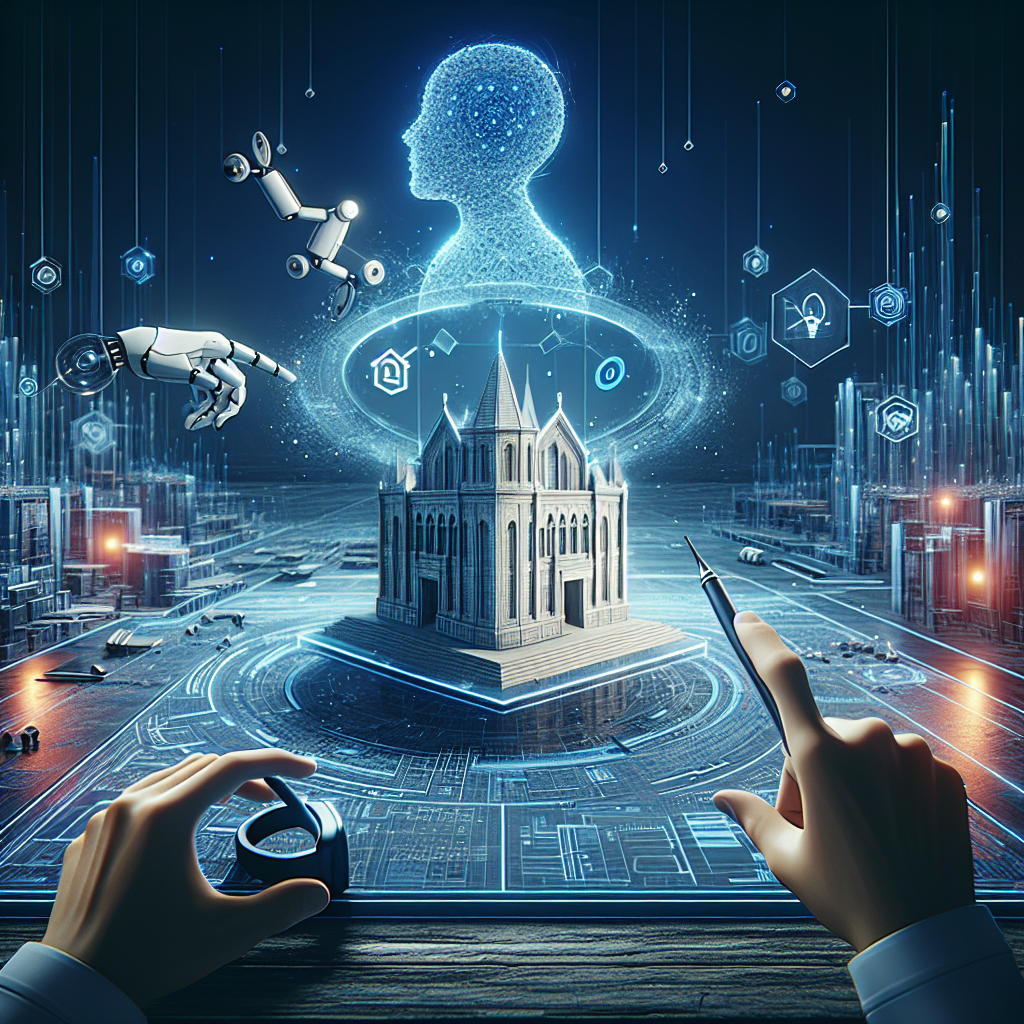In recent years, the fields of artificial intelligence (AI) and virtual reality (VR) have made significant advancements in various industries, including architecture. The combination of AI and VR has the potential to revolutionize the way architects visualize and design buildings, ultimately leading to more efficient and innovative architectural solutions.
AI can be used to analyze vast amounts of data to provide insights and recommendations for architects during the design process. This can help architects make more informed decisions and optimize their designs to meet specific requirements or constraints. Additionally, AI can be used to generate design options based on predefined parameters or constraints, allowing architects to explore a wider range of possibilities and find the best solution for a given project.
VR, on the other hand, allows architects to immerse themselves in a virtual environment where they can explore their designs in a more realistic and interactive way. This can help architects better understand the spatial relationships within a building, identify potential issues or conflicts, and communicate their ideas more effectively to clients and stakeholders. VR can also be used to simulate different lighting conditions, materials, and textures, giving architects a more comprehensive understanding of how their designs will look and feel in the real world.
By combining AI and VR, architects can take their visualization capabilities to the next level. AI algorithms can analyze the design data and provide real-time feedback to architects as they explore their designs in VR. This can help architects identify issues early in the design process, make adjustments on the fly, and ultimately create better designs in less time.
One of the key benefits of using AI and VR in architectural visualization is the ability to create more immersive and engaging experiences for clients and stakeholders. Instead of presenting static 2D drawings or renderings, architects can now offer interactive VR experiences that allow clients to walk through a building, experience different design options, and provide feedback in real time. This can help clients better understand the design intent, visualize the final product, and make more informed decisions about the project.
Another advantage of using AI and VR in architectural visualization is the potential for cost savings and time efficiency. By leveraging AI algorithms to generate design options and VR technology to explore and refine those designs, architects can streamline the design process, reduce the need for physical prototypes, and minimize the risk of costly errors or changes later in the project. This can lead to faster project delivery, lower costs, and ultimately more satisfied clients.
In addition to enhancing the design process, AI and VR can also be used to improve the construction and maintenance phases of a project. AI algorithms can analyze construction data to optimize schedules, identify potential risks, and improve the overall efficiency of the construction process. VR can be used to simulate construction sequences, train workers on complex tasks, and visualize the final building in a realistic context. This can help reduce construction delays, improve safety, and ensure that the final building meets the design intent.
Overall, the combination of AI and VR in architectural visualization has the potential to transform the way architects design, communicate, and build buildings. By leveraging the power of AI to analyze data and generate design options, and using VR to explore and refine those designs in a realistic and interactive way, architects can create more innovative and efficient solutions that meet the needs of clients and stakeholders.
FAQs:
1. How can AI and VR be integrated into the architectural design process?
AI can be used to analyze design data, generate design options, and provide real-time feedback to architects. VR can be used to explore and visualize designs in a more immersive and interactive way. By combining AI and VR, architects can streamline the design process, improve communication with clients, and create more innovative solutions.
2. What are the benefits of using AI and VR in architectural visualization?
Using AI and VR in architectural visualization can lead to more immersive and engaging experiences for clients, cost savings, time efficiency, and improved design quality. AI algorithms can analyze data and provide recommendations, while VR technology allows architects to explore and refine designs in a realistic and interactive way.
3. How can AI and VR help architects communicate their design ideas to clients?
AI and VR can help architects create interactive VR experiences that allow clients to walk through a building, experience different design options, and provide feedback in real time. This can help clients better understand the design intent, visualize the final product, and make more informed decisions about the project.
4. What are some examples of AI and VR applications in architectural visualization?
AI algorithms can be used to generate design options, optimize construction schedules, and analyze building performance data. VR technology can be used to explore and refine designs, simulate construction sequences, and train workers on complex tasks. By leveraging AI and VR, architects can create more innovative and efficient solutions that meet the needs of clients and stakeholders.

